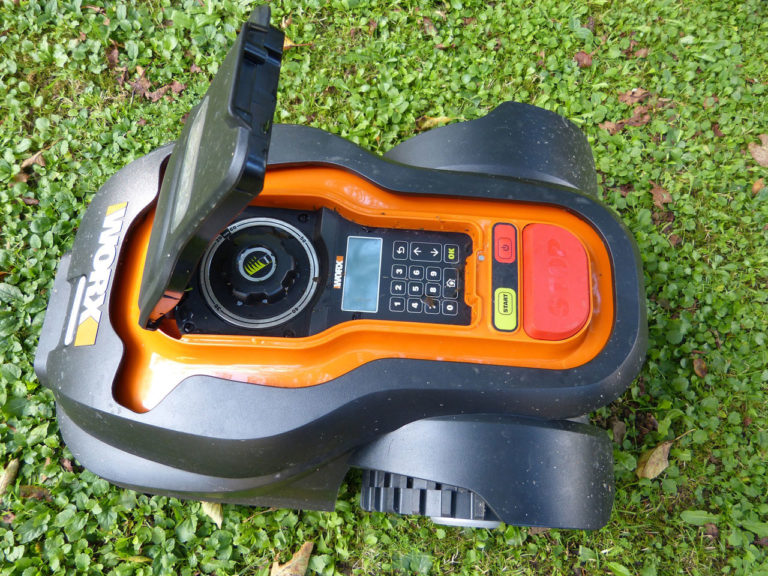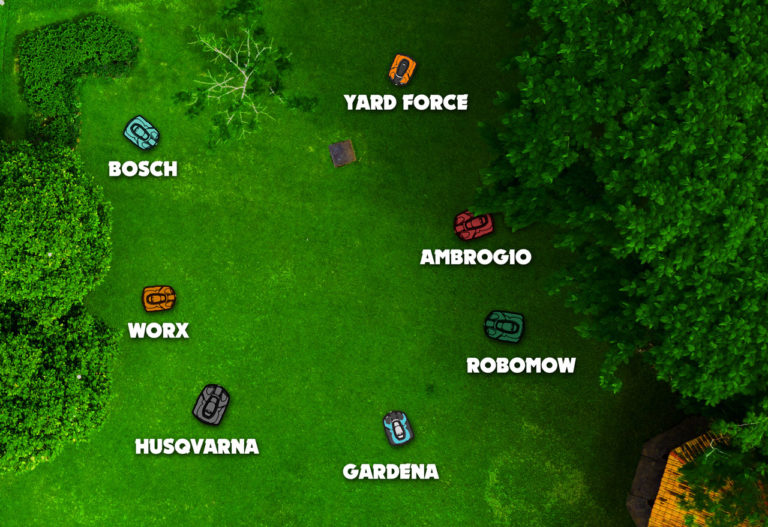If you are currently thinking about buying a robotic mower and comparing the costs, it is of course also important to know how much electricity a robotic mower consumes and what costs you can expect. Here I explain to you which electricity costs you have to reckon with.
What are the electricity costs of a robotic mower? The average electricity costs of a robotic mower amount to a little over 20 Dollar per year. However, this depends on many factors, such as the model, the weekly operating time and the nature of the yard, which is why the costs can be less than 10 Dollar or more than 30 Dollar.
Now you may have a rough idea how much electricity costs are, but you probably want to know more precisely, don’t you? What are the costs for each model? And what other factors influence the costs?
Contents
How high are the electricity costs for the robotic mower?
These are typical electricity costs for robotic mowers
The biggest factor influencing electricity costs is the performance of the robotic mower or the size of the area on which it is used. Since it is not so easy to calculate exact electricity costs for each specific situation and model, I therefore make a rough division according to area size, so that you can get an approximate idea.
Here are typical electricity costs depending on the size of the area:
| Area | Annual electricity consumption | Annual electricity costs |
| 0.05 ac | 20 kWh | $2.60 |
| 0.1 ac | 35 kWh | $4.55 |
| 0.2 ac | 60 kWh | $7.80 |
| 0.5 ac | 130 kWh | $16.90 |
| 0.75 ac | 165 kWh | $21.45 |
| 1 ac | 185 kWh | $24.05 |
| 1.5 ac | 235 kWh | $30.55 |
| 2 ac | 265 kWh | $34.45 |
| 3 ac | 340 kWh | $44.20 |
As you may have noticed, the ratio of area size to power consumption worsens a little at the beginning as the size increases. This is because larger robotic mowers also need larger batteries, which in turn become heavier again.
Especially when jumping from a very small robotic mower to a slightly bigger one, this difference can be quite large, which is why the energy expenditure then increases by leaps and bounds. With larger models the difference is then no longer so big.
In my calculation I assume a an electricity price of 13 cents per kilowatt hour (kWh), which is the current average in the US as of August 2020. If you live in another country, you might want to check your monthly energy bill, the average price varies a lot between countries.
You can also assume that your robotic mower has to do its work from about the end of March until October. That would be about 7 months a year.
How do robotic mowers consume electricity?
Robotic mowers have a rechargeable battery, which most models recharge automatically at a charging station as soon as the battery level becomes too low. The charging station itself also consumes some power for its electronics and the signal loops that are connected here, namely the boundary wire and the guide wire.
The electricity costs result naturally from the power consumption. This depends on many factors. On the one hand, each robotic mower consumes different amounts of energy. This is largely due to the efficiency of the robotic mower. But there are many other factors that influence power consumption.
The performance of the robotic mower is the most important consumption factor
Robotic mowers for very large areas move faster, have a larger mowing unit or sometimes even have several drive shafts in the mowing unit. They also need a larger battery, as they have to cover longer distances. A larger battery is heavier, which is why the robotic mower in turn uses more energy when driving.
Other factors also play a role, such as the frequency with which the robotic mower mows the lawn, the nature of the lawn and the terrain, and the weather. I will go into all these things in more detail below, if that interests you. But let’s get to the facts.
Which components of the robotic mower consume electricity?
The following components consume electricity in the robotic mower
- Drive motor of the robotic mower’s wheels
- Drive motor(s) of the rotary shaft(s) of the mower
- Electronics of the robotic mower
- Electronics of the charging station
- Boundary wire (if available)
- Guide wire (if available)
Of course the robotic mower itself needs electricity. It draws this from the charging station and stores it in its battery. When mowing, it uses this stored electricity. Most of the electricity is consumed by the drive motor of the wheels and the motor that drives the rotating shaft.
Some robotic mowers even have several rotating shafts and thus consume more power. The electronics of the robotic mower also consume some electricity.
In addition, the charging station also consumes electricity. This not only charges the robotic mower, but also ensures that the boundary wire is live while the robotic mower mows. Some robotic mowers also have a guide wire that must also be live.
There are also robotic mowers without boundary wires, with these this factor is of course omitted.
What else influences the power consumption?
- Operating time on the lawn
- Slopes in the yard
- Complexity of the yard
- Lawn variety
- Leaves, fallen fruit, branches in the yard
- Navigation Technology
The operating time of the robotic mower on the lawn naturally also influences the power consumption. The longer the robotic mower mows, the more electricity it consumes. How long you operate the robotic mower on your lawn depends on many factors.
If the maximum area output of your robotic mower is much larger than the actual size of the lawn, the robotic mower does not have to mow as long, as it manages the area much quicker. By the way, you should always leave some wiggle room when it comes to area output. Here you can read more about how long your robotic mower takes to mow your yard.
Slopes in the yard can extend the operating time, as the robotic mower takes longer to ascend them. It also has to use more energy if it has to cope with many inclines. This is often the case not only when driving uphill, but also when driving downhill, as many models must brake here.
The complexity of the yard also indirectly contributes to the determination of power consumption, as the operating time is also extended here. A robotic mower needs considerably longer for a complex yard than for a simple yard, because it has to drive to distant locations first, sometimes via remote starting points, and also finds it harder to find its way through the many angles and corridors.
Even the type of lawn can influence the power consumption. More robust varieties require more energy to mow, as you might imagine. Also, different types of grass grow at different speeds. The faster they grow, the more the robotic mower has to cut each time it is used or the more often it has to go out to mow.
Foliage, fallen fruit and branches also increase electricity consumption, at least if you have a lot of them in your yard. If a lot of leaves get into the mower, the robot has to work harder to mow all of them and therefore uses more energy. The same applies to fallen fruit and branches.
Last but not least, navigation technology can also influence power consumption. Some robotic mowers simply navigate more intelligently than others and can thus cope with the same area more quickly. This in turn reduces the required operating time.
These include technologies, with which the robotic lawn mower drives in lanes instead moving in a chaotic manner, as well as GPS aided navigation that helps robotic lawn mowers to navigate more efficiently. The AIA technology from WORX, which is also an improved navigation software, allows the robotic mower to navigate better, especially in long bottlenecks.
GPS-supported navigation can also reduce power consumption. Robotic mowers use a digital map of your yard to remember the last time they mowed each point in your yard and also record on the map how fast the lawn is growing at each point. This allows them to optimize their mowing route and thus use less electricity.
How can you reduce electricity costs?
There are various ways in which you can reduce the electricity costs of your robotic mower. First and foremost, of course, you can do this by reducing your electricity consumption. But also by changing the electricity supplier you can save a lot of money in the long run, at least if you consider the electricity consumption of your entire household. Here you can compare electricity providers easily.
These are ways in which you can reduce the actual power consumption of your robotic mower:
- Switching to ECO Mode
- Reduce working time
- Avoid mowing in wet conditions
- Remove leaves, fallen fruit, and branches
Some robotic mowers have an ECO mode that enables them to mow more energy-efficiently. They are slower or take a little longer, but they can cover the same area with less energy.
You can also see if you can perhaps reduce the working time of your robotic mower. Maybe it simply mows too much. But of course it should also not mow too seldom. If you don’t really know how to figure out the optimal mowing time, then this article I wrote will probably be very useful for you. Also take a look at my area output calculator.
If you have steep slopes in your yard, you should also avoid having your robotic mower mow in rain and wet conditions. This is because the mower’s wheels are then more likely to spin. This not only drains the battery more quickly without the robot even mowing, but also damages the turf.
In addition, some robotic mowers mow wet lawns worse, become louder and need more energy. However, this depends strongly on the model. HUSQVARNA robotic mowers mow wet grass even better.
If you have a lot of leaves, fallen fruit or branches in your yard, these can also cause your robotic mower to use more power while mowing, because it has to use more energy to process these things with its mowing unit.
Foliage, branches and fallen fruit should therefore be removed regularly if they occur in large quantities in your yard. By the way, a leaf blower is very suitable for removing leaves. One of the best leaf blowers for this job is this one.
Related questions
How high are the operating costs of a robotic mower? The operating costs of a robotic mower are made up of various components:
- Electricity costs
- Regular replacement of the blades
- Occasional replacement of the battery
- In rare cases, additional fees for household insurance
An average robotic mower has operating costs of about 60 Dollar per year.
What does the installation of a robotic mower cost? A robotic mower can be installed by an installation service. The costs that are charged for the installation depend largely on the size of the area where the robotic mower is to be installed. Underground installation of the boundary wire usually costs slightly more than above ground installation. Depending on these factors, the costs range between 200 Dollar and 2000 Dollar.





